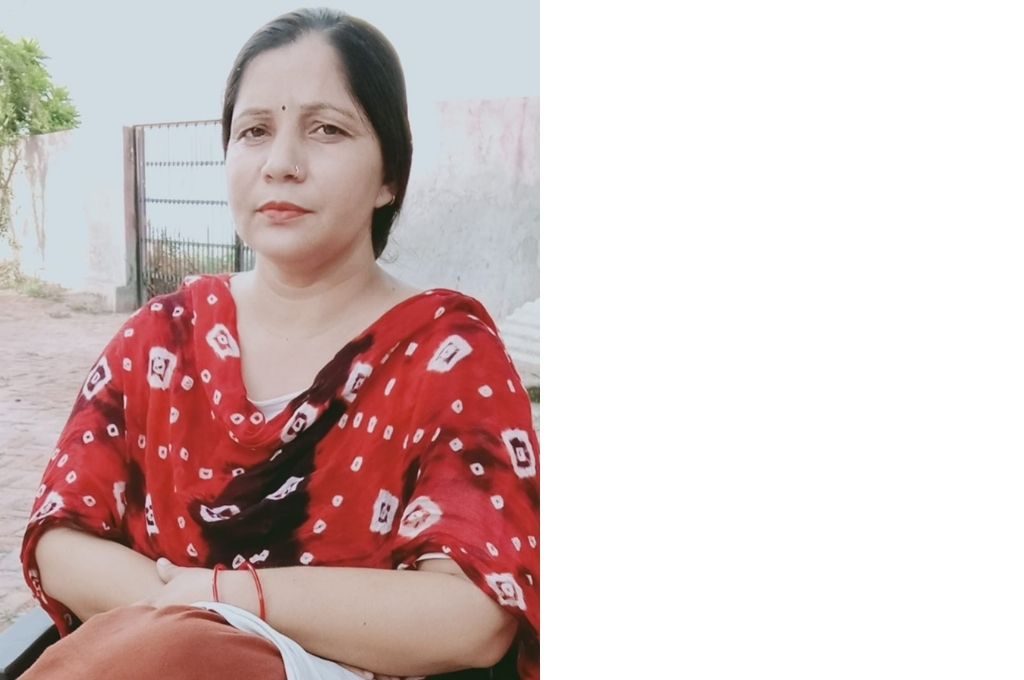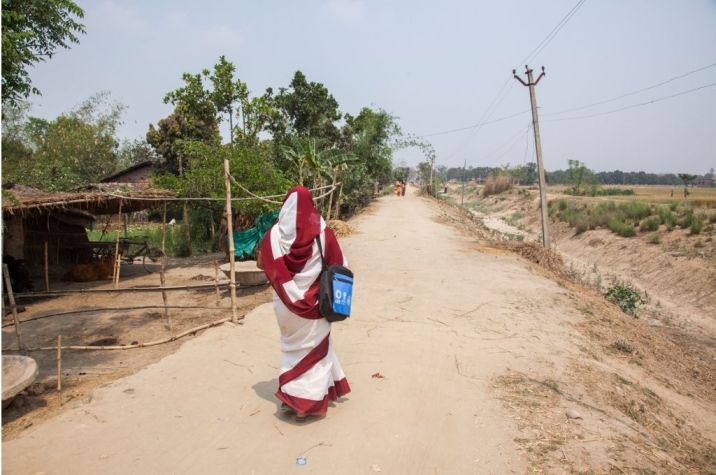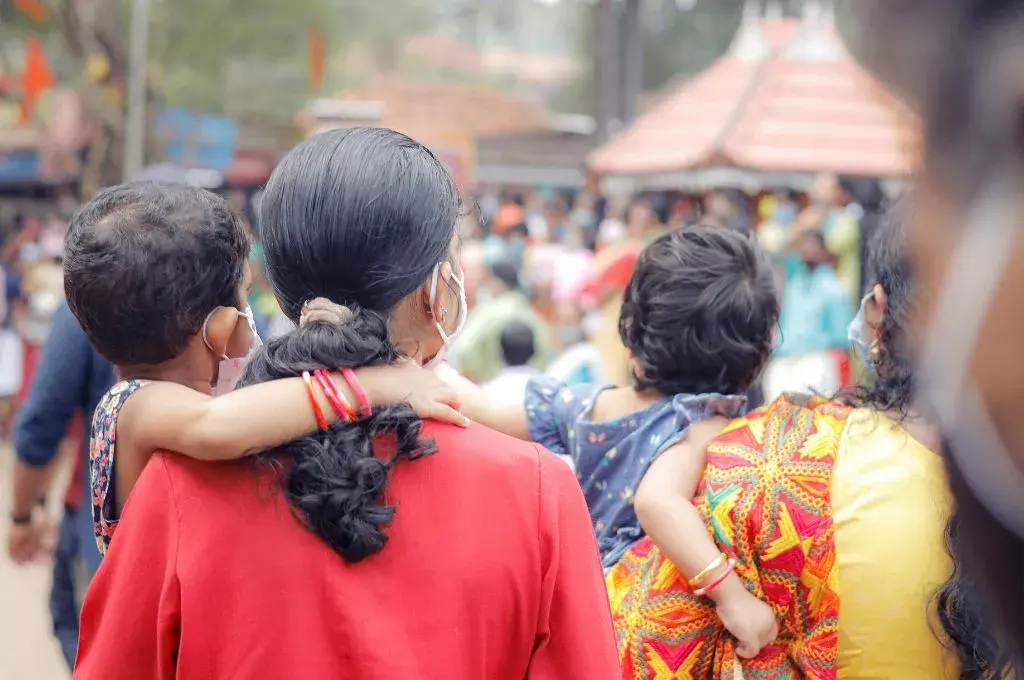Sunita Rani has been working as an ASHA worker in Sonipat, Haryana for the past 11 years. Drawing strength from various social movements in history, and greatly inspired from revolutionaries like Bhagat Singh, Savitribai Phule and Kartar Singh Sarabha, she has waged many struggles as part of an ASHA workers’ union affiliated with the Centre of Indian Trade Unions (CITU). Here she talks about the challenges of rural healthcare, the need for deprivatization, the pitfalls of government insurance schemes and the caste-class nexus within which health workers operate.

What does a day of work look like for you?
I have been working as an ASHA (Accredited Social Health Activist) worker in Sonipat, Haryana, for the past 11 years. I have never been assigned to an urban area; I only work in rural areas. As an ASHA worker, we do field work every single day—missing even a day means a pile-up. We have to walk 4 to 5 kms every day to work with mothers, pregnant women, infants and children in villages—ensuring they are vaccinated, ensuring they are not anaemic, transferring pregnant mothers to hospitals on time, making sure there is no delay in their registration, and getting their blood tests done. Apart from that, informing the health department about cases of any new infections in the community, not just Covid, is also our responsibility.
In Haryana, there are around 618 ASHA Sahyoginis, and 20 ASHAs report to one Sahyogini. The Sahyoginis are multipurpose health workers who mostly work at the primary health centres, and vaccinate children, and do check-ups for pregnant women. They further report to the government headquarters.
The biggest problem we face is the inefficient public health system. The government keeps sending us to the field to get as much data as we can, but they don’t give us any solutions to take along.
From maintaining data about illnesses, and the family planning methods women use—we ASHAs track them all because the government can demand this data from us at any point. Aise hamara 4-5 ghante toh field mein hi lag jata hai. But it doesn’t just end there—we have to do record-keeping after coming home. Maintaining this data on a daily basis is a strenuous task.
The biggest problem we face is the inefficient public health system. The government keeps sending us to the field to get as much data as we can, but they don’t give us any solutions to take along. Let’s say someone has a fever, or if someone is experiencing any kind of pain, we can only give them information about medicine but not the medicine. This limitation irks us a lot. We have enough experience and training to be able to recognise the problem if the infant, say, is vomiting or has loose stools. But the government has not provided any actual resources for us to be able to help them. We only go there as providers of information and collectors of data—which, of course, frustrates the community who assume that they can rely on us for treatment or quick solutions. But what can we do? The government asks us to survey the community regularly, which makes them see us as irritating pests, and we have to bear the brunt of their anger sometimes. I don’t blame them.
What made you become an ASHA worker?
As a divorcee with two children, I needed some means to sustain my family. My mother used to work as an anganwadi worker in the health department. I would often help her out with her work and was inspired by her to come into this line of work. Before this, I also did some beauty parlour work in my village but I don’t have time for that anymore.
What does the public health system look like in Haryana, where you work?
I can start with an example. It’s our job to make sure pregnant women reach hospitals on time. The hospital staff misbehaves with them often, especially with working class women. The poor cannot afford private healthcare, and our government healthcare system is disastrous. There are long lines and you have to wait for so long to be able to get a check-up done. Often, they don’t have ultrasound machines. We have to deal with doctors taking bribes and overcharging poor families for C-Section deliveries. But if we oppose these malpractices, we become their target. It’s not as if we have great job security. ASHAs have been ousted from their positions in the past for speaking up.
[In Haryana, pregnant women can register themselves for Rs 5 and then get free treatment at any government hospital. But…]
There’s a staggering shortage of medicines in government hospitals. Pregnant mothers need calcium, iron and magnesium tablets, even these are not made available to the ASHA workers. Patients have to adjust and buy from a private retailer. Since we are unable to directly provide them with medicines, there is a breakdown of trust between us.
I feel the way doctors behave with poor people is a big problem. Haryana is still a comparatively prosperous state, and if the healthcare system is like this here, I don’t even want to imagine how it operates in poorer states. Aur yeh ek jo amir aur garib se nafrat karne ka mahaul hai woh har baar hamare samne aata hai, jisse hum bhi kafi hatash hote hai. Accha nahi hai woh kisi bhi community ke liye, health system ke liye woh bilkul accha nahi hai. (And this atmosphere in which the rich hate the poor, we have to deal with it all the time. It’s frustrating for us ASHA workers, and it’s not good for the community or the health system).
What would you say has changed in your work life after the pandemic?
Earlier, we’d spend 4 or 5 hours on fieldwork within the community, but ever since Covid, our working hours have increased. We have had to increase our mental preparedness. We have to follow up on every single thing. Who has fallen sick? Who is in isolation? Who is awaiting their test results? Have the Covid-positive patients recovered? We are supposed to document it in a form every single day. It is exhausting. The government has also imposed the responsibility of conducting online surveys without much training. There is also a tremendous increase in anxiety. This has really affected our work, our efficiency—we are so stressed and overburdened all the time.
The government has not provided much protective gear or support so we have to spend our own energy, time and money trying to keep ourselves safe.
We are still accompanying people, especially from poor families, to hospitals which are Covid hotspots; still getting their tests and ultrasounds done; accompanying them on follow-up visits. We are still responsible for providing post-natal care to newborns when they come back from the hospital. From their susu-potty to their feed to their medicines to keeping a check on their weight and breathing, we have to keep tabs on all sorts of information and none of this has stopped during the pandemic. And while taking care of babies you feel personally responsible for them, you know; so with Covid, we are doubly anxious that we shouldn’t infect even a single baby or a pregnant mother. The government has not provided much protective gear or support so we have to spend our own energy, time and money trying to keep ourselves safe for the sake of the infants and mothers we work with.
You mentioned there is a frequent trust breakdown between ASHA workers and the community. What do you think brings that about?
Our duty is to make sure the poor from the community are reaching hospitals. The terrible conditions of the hospitals frustrate the patients and, sometimes, that anger is transferred to us. I feel, more than anything else, we need to look at the economic aspect of this—how the poor and the marginalised are discriminated against by the doctors, and as a result, the patients’ anger is directed at us.
If a member of the hospital staff misbehaves with the community or causes medical negligence, we bear the brunt of it, not the medical professionals concerned. The patients ask, “Why were we brought to a government hospital if there were no facilities?” What should we communicate to them?
Have you ever been formally trained to help overcome this breakdown of trust with the public?
No, we have never received any formal training in health communication from our department. There was a one-day training that had happened at someone’s home a long time ago for basic protocols, but nothing specifically around health communication. In fact, post-Covid, violence against ASHAs has increased. Some of my fellow ASHAs faced threats and were beaten up. Despite repeated attempts to lodge a complaint with the health department, no action was taken. We had to fall back on our union to help lodge a complaint.
What role does caste play in the way ASHAs—who come from multiple social positions—work with communities?
There are instances of ASHA workers discriminating on the basis of caste and not providing Dalit families with proper care. For example, an ASHA should be going three times to inspect and check up on a newborn and monitor its postnatal care. But I have seen upper-caste ASHAs going only twice to Dalit households for their babies’ postnatal care. The third visit they make is for the sake of formality—they will just ask from outside (the house), “Is the baby fine? Is the baby eating properly?” and fill in their cards on their own, without properly inspecting the baby. Here in Haryana, certain dominant castes do not approve of ASHA workers from their families going to work with Dalit families inside their homes. I have also heard some say things like, “Haan, majboori hai jana padta hai inke paas [referring to Dalit households]. Ghar aake haath dho lete hain acche se, nahaa lete hain.”
Hence we had written to the health department, flagging this issue multiple times. We recommended that more Dalit ASHA workers be employed and sent to work within Dalit communities to safeguard against any kind of discrimination. But it is difficult to find Dalit women who have passed at least 12th Class [which is the minimum requirement to be employed as an ASHA], owing to the lack of access to education Dalits face.
You are part of an ASHA Union. How did this union emerge? What collective struggles have you been a part of?
We began organising around 2009. Back then, there used to be only one ASHA Workers’ Union, which is a Haryana state union affiliated to the Centre of Indian Trade Unions (CITU). Over the next decade, we raised many issues, including non-payment of dues, exploitation or harassment. Right now, multiple struggles are being waged by ASHA worker unions across the country on various issues. For example, we have received phones from the government to work with, where we do our online data collection and reporting. The government asked us to download an app called MDM, which would enable it to track our location in real time. We have protested against this gross violation of our privacy.
We have been given only 6 masks and one 500 ml sanitiser bottle since the pandemic began.
We get a fixed salary of Rs. 4,000 from the state government of Haryana and Rs. 2,000 as an incentive by the Central Government for tasks like maintaining birth and death records, keeping track of couples and how many children they are producing, organising meetings in communities for public health awareness, etc. Do you think this is enough? Aren’t we frontline workers? We can barely pay our children’s school fees with a few thousand rupees. We have been given only 6 masks and one 500 ml sanitiser bottle since the pandemic began. Whatever little they have provided was also made possible when our union took up the fight with the public health officials.
What government interventions are needed to improve the working conditions of ASHA workers?
First, reduce our working hours. Working 10-12 hours a day, we are beyond exhausted and overworked. The health of the community is tied to that of the ASHA worker—you want to build a ‘Healthy India’? Give us rest first. Only if we are well rested will we be able to work efficiently with the community. Secondly, improve our economic conditions. It’s high time they increased our wages. We have been working for 10-15 years and yet, at the most, some of us are able to earn only Rs. 8,000 a month working more than 12-15 hours a day. All ASHA workers should be paid what skilled workers are paid.

Thirdly, give us social security benefits; cover our healthcare and that of our families’. Give government education to our children so they can study and become doctors. Only if we are healthy, well paid and our families are not suffering will we be able to work to provide data and information to the government. These reforms should extend not just to ASHA workers but all National Health Mission workers, including contract employees, and their appointment should be made permanent.
Drawing from your work for the past 11 years, could you give us some insights and examples of public health policies that have worked?
What example can one give? All that we have been seeing for the past few years is the increasing privatisation, making healthcare inaccessible to the masses. Woh jo swasthya hai aaj business ban gaya hai. Even the way government insurance works. For example, if a patient comes for treatment and his medical bill is less than Rs. 5,000, the insurance [company] is not liable to reimburse the hospital. As a result, the doctors scare, exaggerate and harass poor patients into getting expensive procedures. Humne khud hote huye yeh dekha hai. The greater the cost of the medical treatment, greater would be the reimbursement hospitals get under this scheme.
Healthcare has been made into a business and when anything becomes a business—be it health or education—it does not centre citizens’ well-being at all. Education too should be deprivatised. These should remain as systems for public welfare.
What would you say are some urgent interventions needed to improve the public health system, keeping the immediate realities and contexts around you in mind?
Ideally, the government should provide free healthcare and medicine to all, even for the most severe of diseases; it can start by at least strengthening our public health system. Taxpayers’ money has already been spent and we have a system in place. The government needs to fix what is broken instead of bringing in private players. People shouldn’t have to bear the costs of travelling to far-off private hospitals. We already have PHCs and SHCs but with no doctors or ultrasound machines. Use our money to buy new machines and provide medicines. Appoint lab technicians and other medical staff in these centres. Repair the buildings which are collapsing. At least 95% of our total health system should see the participation of government and not private players. [And] make health policies keeping citizens in mind, not private players.
This article was originally published on The Third Eye.





